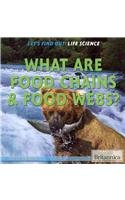-
Cryptography: Cracking Codes
Rob Curley
Library Binding (Britannica Educational Pub, July 15, 2013)Examines cryptography, discussing the history of the science, different cipher types, and how codes and codebreaking have changed with computers.
-
Oceanography and Hydrology
Nicholas Croce
Library Binding (Britannica Educational Pub, Aug. 15, 2016)With an eye toward the STEM disciplines, this book will excite anyone who is interested in the science of something that most of us take for granted: water. With straightforward and compelling language, this book teaches readers about the basic functions of the oceans and seas, the biodiversity in large bodies of water, how rivers, streams, and lakes work, and water management, among other details of the mechanics of water. This book will give readers a greater appreciation of this most abundant yet scarce resource, as well as of environmental causes in general.
-
Genetic Testing and Gene Therapy
James Wolfe
Library Binding (Britannica Educational Pub, Aug. 1, 2015)Modern science has made remarkable advances in genetics. This volume covers the foundations of genes and heredity to give readers a solid understanding of what modern genetics has been built on, before examining the ways in which genetic testing is used to assess genetic risk. Also featured are the many ways researchers and medical professionals are using gene therapy to improve lives, as well as bioethical considerations and social ramifications inherent in going even further with genetics.
-
What Are Food Chains & Food Webs?
Louise Spilsbury
Paperback (Britannica Educational Pub, Jan. 1, 2014)This book explains the transfer of energy between living thingsknown as the food chainin a way that allows any reader to grasp the scientific principles behind food chains and food webs. The diets of herbivores, carnivores, and omnivores are explained, as well as other types of diets, and the flow of energy between these groups is made clear with arrowed diagrams and colorful pictures that show where different species derive their energy. Also examined are the effects different habitats have on the food chain, and how food chains in different environmental regions can be contrasted. U
U
-
Britannica's Student Atlas
Inc. Encyclopaedia Britannica
Hardcover (Britannica Educational Pub, Nov. 1, 2010)Presents an atlas featuring political, physical, population, economic, cultural, and climate maps of the world and of the continents.
-
Gods & Goddesses of the Inca, Maya, and Aztec Civilizations
John Murphy
Library Binding (Britannica Educational Pub, Aug. 1, 2014)Introduces the major and lesser figures of Maya, Aztec. and Inca mythology and discusses the origins of their religions and civilizations, and their beliefs and practices.
-
Geothermal Energy
Elizabeth Lachner
Library Binding (Britannica Educational Pub, Jan. 15, 2019)Many people associate geothermal energy with watching dramatic geyser eruptions or relaxing in a steaming natural hot spring. However, heat from within the Earth can also be used to generate electricity and heat buildings. Readers learn about the past, present, and future of geothermal power through this informative book. Topics covered include how geothermal heat is created and brought up to Earth's surface, the surface features, such as lava flows, hot springs, geysers, and fumaroles, that are signs of it, and how geothermal heat pumps and geothermal power plants work. The need for renewable energy sources such as geothermal energy is addressed, as is the need to manage geothermal resources sustainably. Z
Z
-
How Greek Immigrants Made America Home
Cyree Jarelle Johnson
Library Binding (Britannica Educational Pub, Aug. 15, 2018)Written by a descendent of Greek immigrants, this book explores the stories behind leaving the mountains and islands of Greece throughout its recent tumultuous history. Many of those emigrants came to the sprawling cities and countryside of the United States. This book explores how Greek Americans did much to overcome war, family conflicts, exploitative labor practices, restrictive xenophobic quotas, and generational identity differences to become part of the American experiment. The history of how Greeks became Americans through these contemplations of the problems that immigration poses will activate the reader's critical thinking skills. They will recognize that these problems are relevant today. V
V
-
How Do Animals Communicate?
Sara Howell
Paperback (Britannica Educational Pub, Aug. 1, 2015)Discusses the many ways animals communicate, including voices, sounds, dialects, colors, body patterns, light, body language, and touch. M
M
-
What Are Mollusks?
Sarah Machajewski
Paperback (Britannica Educational Pub, Jan. 1, 2017)Marine biology is both essential and inspirational to human life. The bodies of mollusks in particular allow them to live aboveground, underwater, or both, depending on the species. Readers will learn about the unique contribution oysters, squid, and slugs, all of which are different classes of mollusks, make to their habitats. Their diets, their vulnerabilities, what they leave behind, and what threatens them take shape on pages that depict what mollusks are through both stunning photography and highly organized prose. O
O
-
Nelson Mandela: Nobel Peace Prize-Winning Champion for Hope and Harmony
Tracey Baptiste
Paperback (Britannica Educational Pub, Aug. 1, 2015)Shares the life of the South African icon, including his early career, his fight to end apartheid, and how he became the president of South Africa. Y
Y
-
The Components of Life: From Nucleic Acids to Carbohydrates
Kara Rogers
Library Binding (Britannica Educational Pub, Jan. 15, 2011)Discusses the molecular components of life, including nucleic and amino acids, proteins, lipids, and carbohydrates, and details the history of study in the discipline and how they affect human and animal body functions.